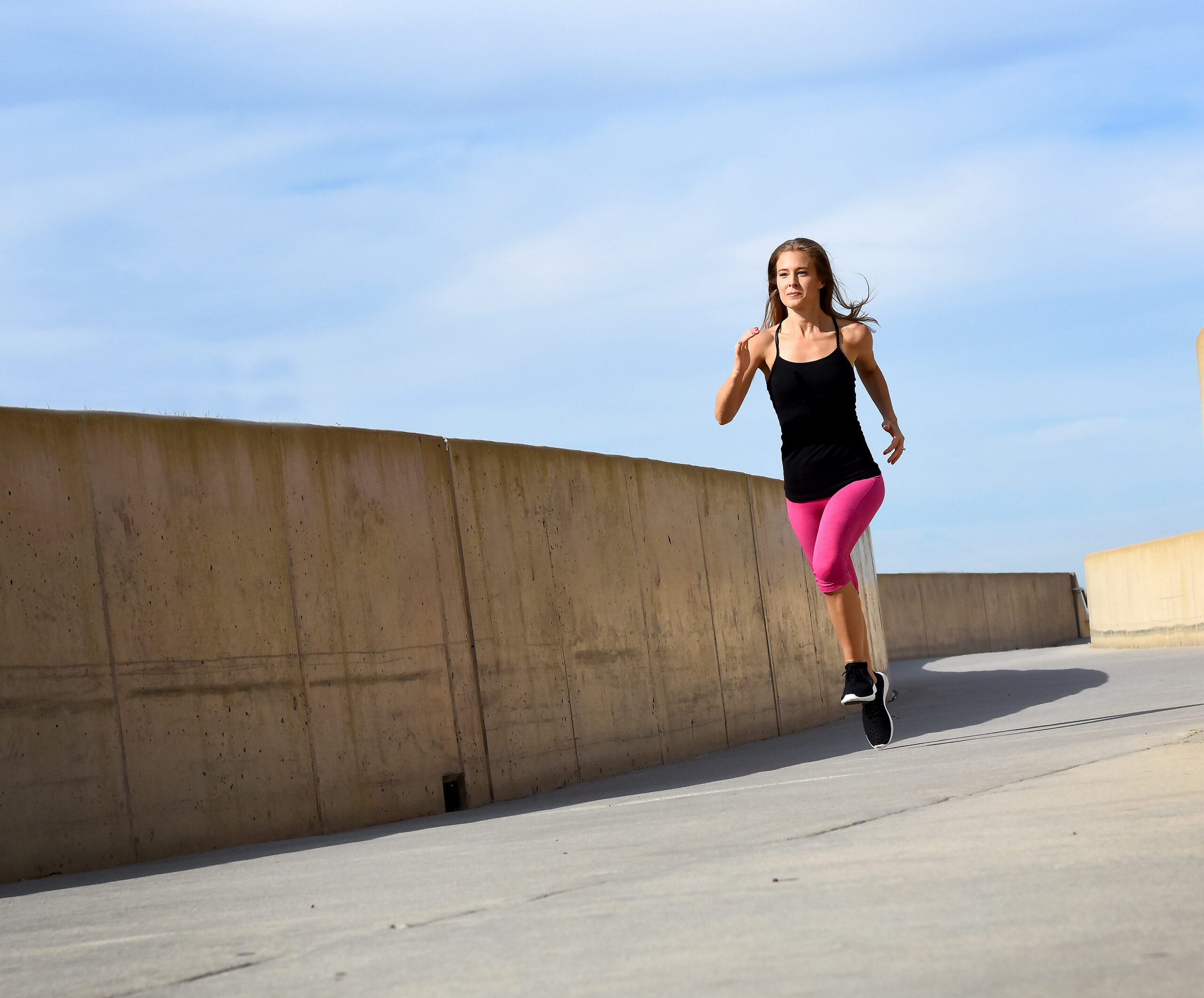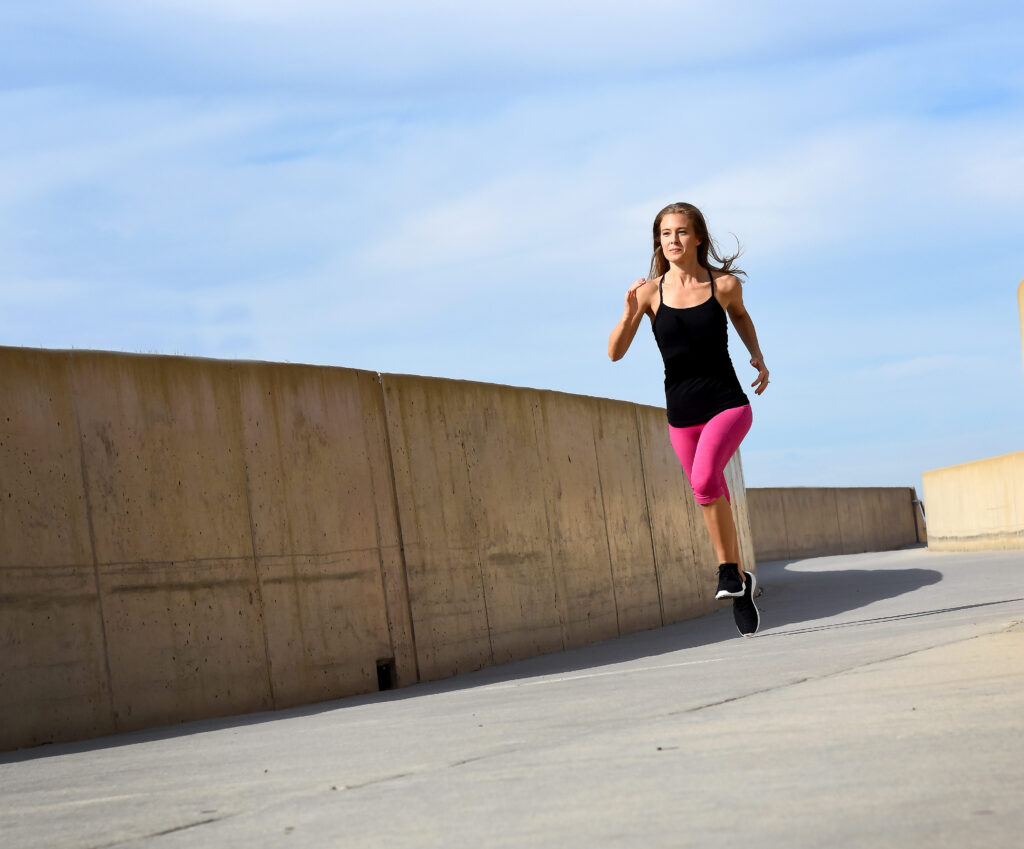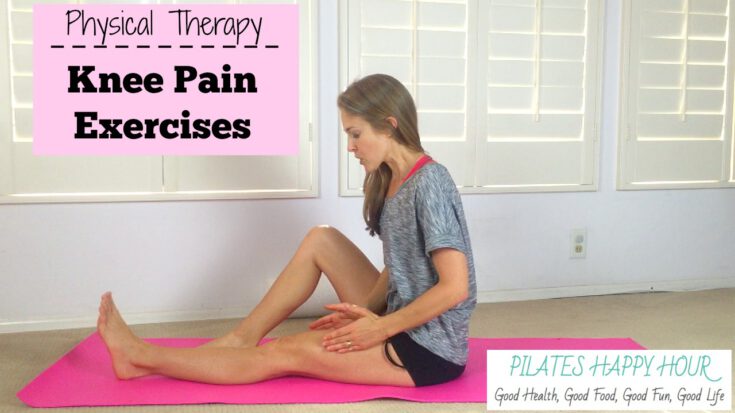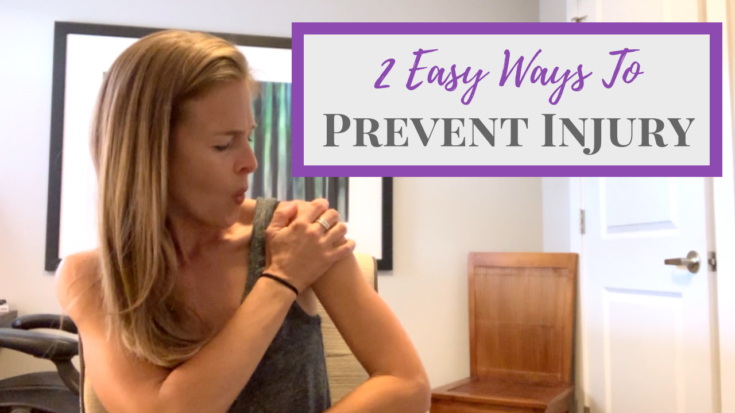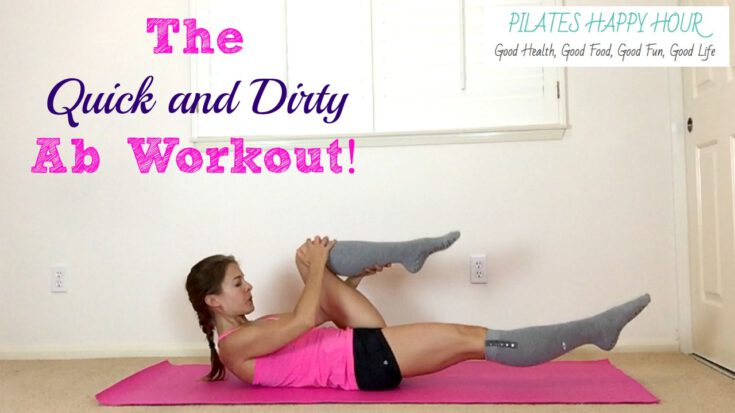Exercises for knee pain can be beneficial to almost anyone who uses their legs on a daily basis, including runners!
Whether it be walking, hiking, running, squatting, kneeling, climbing stairs, jumping, lifting or standing, we need our knees to be in good shape!
Unfortunately, knee pain is a common complaint and one that many people suffer from.
There is good news, though!
Knee pain can often times be treated with a few home exercises and strategies.
Let’s go through all the anatomy and reasons you may be experiencing knee pain, and then we will get to the actual exercises for knee pain.
One of the most common causes of knee pain is what we call patellar tracking disorder.
Your upper leg bone (the femur) connects to the lower leg bones (the tibia and fibula) through a combination of muscles, ligaments, tendons and cartilage. The patella (kneecap) sits on the front side of the femur/tibia junction. It is involved in some of those muscle and ligamentous attachments, but, for the most part, you can think of it as simply hanging out and floating there.
*This picture can be really confusing if you don’t know anatomy :)! I just want you to see how the kneecap sits on the front of the knee and lower part of the leg, and also notice how many muscles run all the way from above the hip to below the knee. This is why the hip is so important for knee strength!!
Our bodies are developed to work like a well-oiled and perfectly designed machine. The femur has a lovely groove in the front where the kneecap can hang out. It moves up and down in this groove as our knee bends and straightens. It has some play to move side to side as the forces on our knees change, but it likes to stay fairly congruent in this groove. It kind of hydroplanes there – meaning it skims along the bursae without ever actually coming in contact with other bones. The kneecap is happy in this perfect world.
While we were designed to work this way, the world has other plans sometimes.
Because of our activities, diseases or injuries, that kneecap can start to track outside of it’s happy groove home. Usually this tracking is laterally, meaning it’s pulled slightly to the outside and starts to hang out there. Now, when you bend and straighten your knee, instead of the kneecap floating in the space it’s meant to, it moves up and down along part of the femur. It’s a minuscule shift, but a very important one. That kneecap is basically now tracking on bone instead of fluid. That lateral tracking of the kneecap starts to cause inflammation and pain. It can change the way the muscles act and change your movement patterns. Over time, it can lead to osteoarthritis and chondromalacia of the patella.
This is VERY common in runners! Runners typically move in one plane of motion – forward. The quads and calves work really hard in this activity, leading to possible muscle imbalances. Long distance runners need to cross train and focus on gluteal and hip abductor/adductor strengthening to help prevent injury. Foam rolling – especially those pesky iliotibial bands – also is extremely helpful.
Symptoms of patella tracking disorder include:
- pain in the front of the knee
-
pain that intensifies with squatting, kneeling and climbing stairs (going down stairs is usually worse)
-
feelings of your knee buckling or giving way throughout the day
What causes this?
While various things can cause patella tracking disorder, it almost always occurs because of a muscle imbalance somewhere in the lower extremities. Over time, the muscles on the outside of the thigh become tight and the muscles on the inside of the thigh become weak. When asymmetries like this occur, the ligaments and tendons are also put on various amounts of stress or laxity. The patella ends up being pulled laterally and maltracking begins.
I see this mostly in two different groups of people:
1) People who have performed certain activities for years and have developed specific muscles that are strong and others that are weak. It’s very common dancers, runners and cyclists.
2) People who have had hip or knee surgery. Sometimes after surgery people are feeling so good that physical therapy isn’t prescribed. They jump right back into their activities not knowing that the most important muscle for correct knee positioning – the vastus medialis oblique – basically shuts down if there is any trace of fluid or swelling under the kneecap. You might feel great, but the muscles haven’t caught up to you yet. You want to run, so the body uses the wrong muscles to do it, and the kneecap suffers.
If you have a kneecap that isn’t tracking correctly, it doesn’t matter how many leg exercises you do at the gym to strengthen it – you are just causing the kneecap to get pulled in the wrong direction every time you move. You have to first CORRECT the movement pattern, and THEN go do squats and lunges and hamstring curls and all that fun stuff you may (or may not – no biggie) want to do.
I created the video and exercise program below to help you get back to basics and retrain the tracking of the kneecap. These are the first four exercises I give almost every client I see with knee pain. You might be the strongest person I’ve ever met and can squat 400 pounds – you still get to do these to wake up those small little stabilization muscles that might not be working. They appear simple, but it’s important to do them every day and stay consistent to really help the kneecap track correctly again.
I’m excited to be an ambassador for If Girls Ran the World this coming October, where people will be running all across the globe to help encourage women, children and the charities that support them. You can learn more about why I’m so proud to be working with them here.
Please join us as we virtually run around the world! You can register and run yourself, or consider donating to the charity I’m working with, The Hunger Project.
If you enjoy the content and videos I post, or have received any encouragement and help from this blog, I would be forever grateful if you helped with this important fundraising project.
Together we can truly make a difference.
